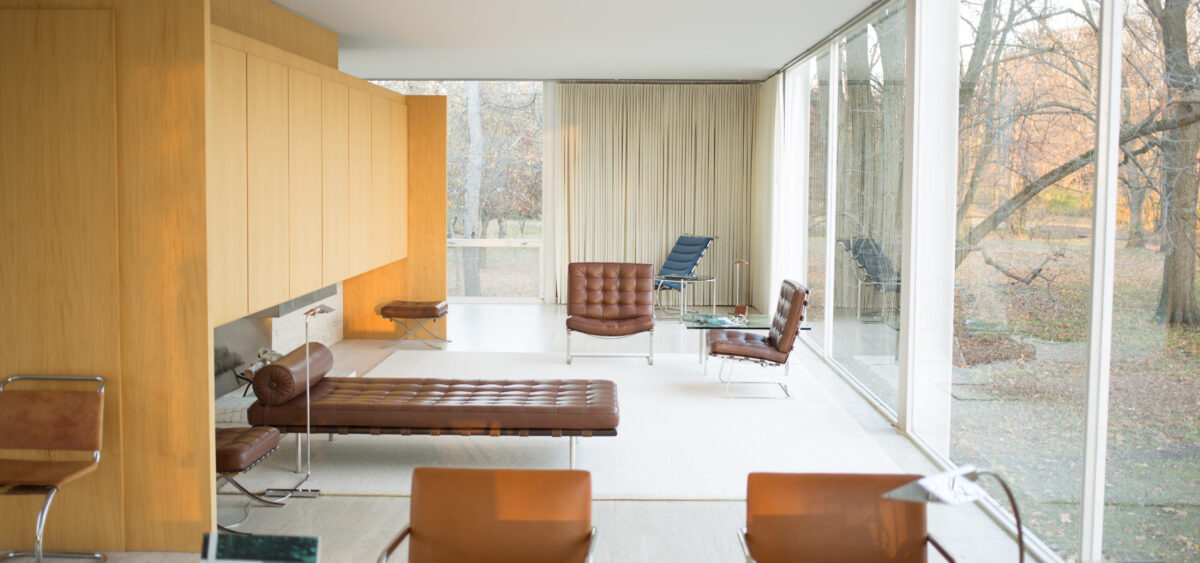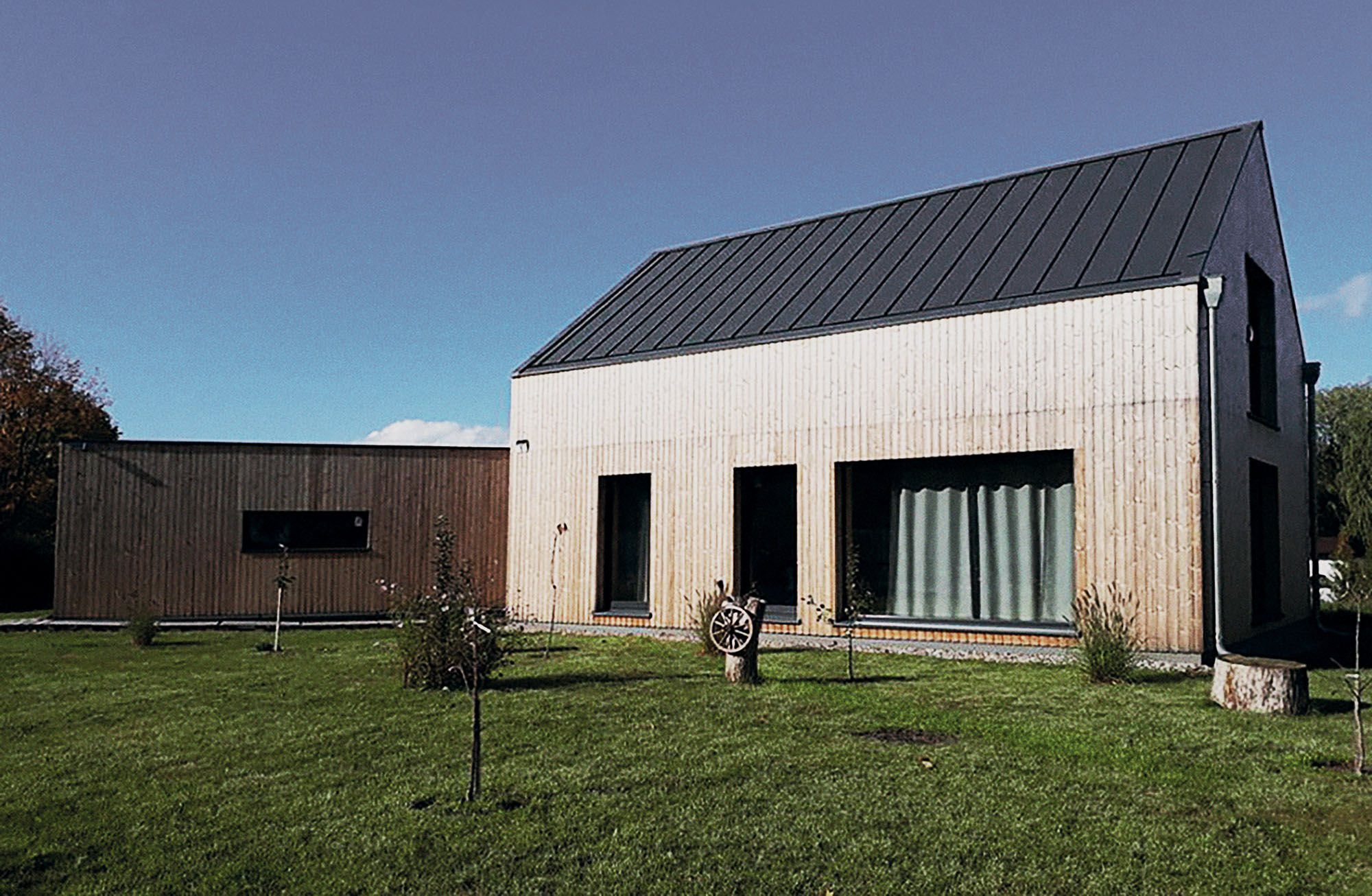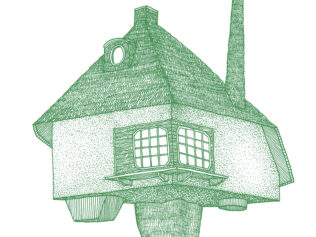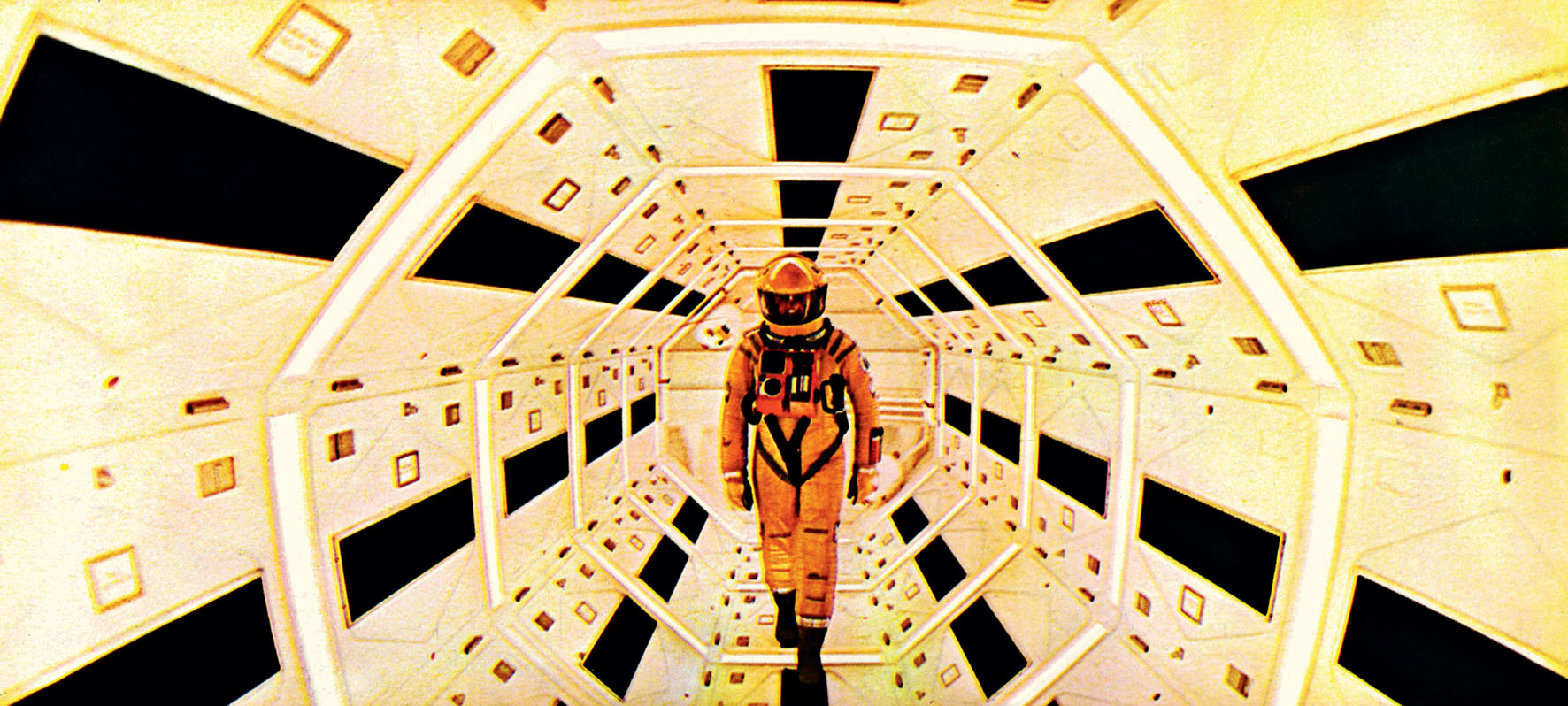
Pier Vittorio Aureli is an Italian architect, lecturer and intellectual. He tells Zygmunt Borawski why contemporary minimalism can be compared to lubricants, and where the frugality fad in architecture comes from.
Zygmunt Borawski: Your book on minimalism has an intriguing title: Less is Enough.
Pier Vittorio Aureli: It’s a provocation. I paraphrased the saying ‘less is more’, attributed to the German architect Ludwig Mies van der Rohe. And he borrowed it from the English poet Robert Browning to describe his work ethos, founded on the idea of constant reduction.
‘Less is more’ became a motto of many architects after the financial crisis. It was used by the Italian architect and city planner Stefano Boeri, who wanted to communicate that from now on, we need to work very hard to create even more with even fewer resources; to make more for less. But Mies meant something completely different! He wanted to draw attention to an ethos of work that we so often reject in today’s world. Instead, his slogan became an ideological explanation for the economic situation.
The concept of austerity politics poses an interesting paradox. On the one hand, we are encouraged to save, but on the other, the whole world is trying to push us toward endless consumption. We keep talking about saving money, but we can’t live without a credit card. It’s consumption and debt that is becoming a real problem. My title – Less is Enough – was an attempt to bring us back to Mies’s idea by saying: “No! Less does not mean more, it means just enough.” It’s also a way of criticizing superficial economic sacrifices and the fake moralism that keeps pushing us towards the ceaseless accumulation of goods.
Do we live in times of austerity?
That’s a lie the media is feeding us. The real problem is debt, which is much more subtle and powerful because it directly affects our freedom. The politics of austerity was created by Girolamo Savonarola [a 15th-century Dominican Friar from Florence who was a religious and political reformer, known for opposing the greed and vanity of those in power, also in the Church, and calling for the renewal of Christianity – ed. note], whom I always found a fascinating figure. Both left and right wing supporters often give him a bad name. Savonarola considered the wealthy Medici family – the bankers who ruled Florence – corrupt to the bone. The Medici had destroyed the existing social bonds and the 16th-century Florentine republican ethos. To Savonarola, austerity was a way of leaving Medici politics, expressed through art, its consumption and speculation.
Is that why he publicly burned beautiful, valuable works of art?
This argument is often brought up to prove that Savonarola was an insufferable fanatic. But he also undertook many subtler actions. The artistic expression of his times was extraordinary. Just think of such brilliant painters as Fra Bartolomeo, or such architects as Il Cronaca. Their austere restraint had no violence to it.
Naturally, liberalism came up with its own interpretation of austerity – a superficial and ambiguous one. Capitalism cannot be based on sacrifices, because it needs something to aspire to constantly. Contemporary austerity politics does not expect everyone to share the poverty equally. It’s more of a threat and an instrument of blackmail. Like in the case of Greece: the country was told that if the Greeks didn’t pay their debts to other European countries, they would lose everything.
In your book, you extensively discuss the idea of asceticism. Is it something we should adopt in our everyday lifestyle, or just during times of austerity?
When writing this book, I didn’t have any ultimate solutions in my head. It will not tell you how to live your life better. I hate the word ‘lifestyle’! It’s exactly what we see in those magazines full of pretty photographs showing people who live in some isolated hut far in the mountains or in the desert. ‘Form of living’ is a much more complex idea. It cannot be explained in pictures.
In our culture, which is ruled by consumption and hedonism, asceticism has had bad press. But in the real meaning of the word, asceticism is an exercise. It describes consciously adapting and building upon a certain form of living, not locking yourself away in some cell where you do nothing but kneel and pray.
I never said that asceticism is an answer to all our struggles. But if we consider it a deliberately created and thought out form of living, it doesn’t only apply to monks, but also to artists or writers. They are the people who need to give their days an exact structure. Any ascetic person must try to answer the fundamental questions we encounter every day: What is a family? How do I make a living? What is my attitude towards work understood as payment, self-fulfilment and appreciation of one’s self?
Can architecture support the ascetic life?
The most radical example of such cases is the monastery. Monastic architecture is an example of the form following the purpose. In a monastery, every moment of each day is connected to a certain space. Every gesture has its own ritual around it. Monastic architecture has become a blueprint for many secular institutions such as schools or prisons, but also modern housing projects. However, those reinterpretations forget the primary motivation of this kind of architecture: the form of living. A ritual that should be performed with commitment turns into a habit, and habits destroy focus. Asceticism, on the other hand, centres around the daily questioning of our habits. It creates a form of living that makes us notice when our gestures become empty.
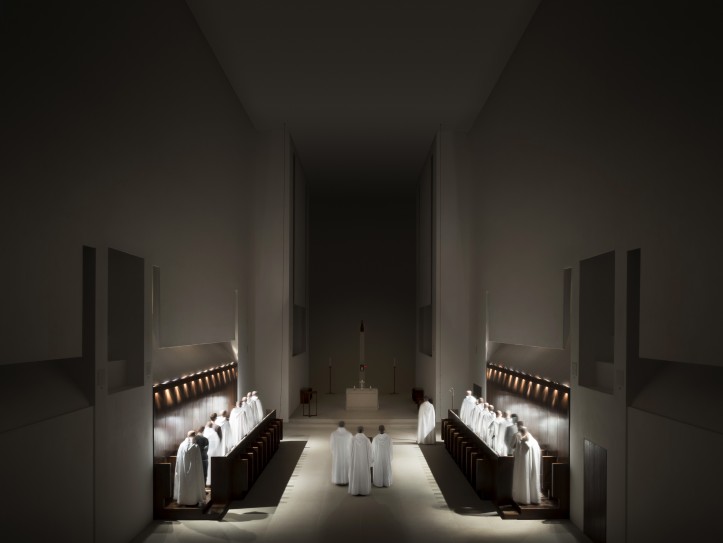
You claim that monasticism created the foundations for developing capitalism.
I believe that when the Church became an institution, it didn’t encourage the development of private property, but it glorified work itself. I mean work in its contemporary form, not the ancient one. In modern times, we are expected to commit fully to work, so it becomes the meaning of life. I’m not saying that the Church is responsible for it, but the Benedictine motto Ora et labora did contribute to our current situation. Everything began when this rule became deformed, and monasteries moved from contemplation towards the production of goods.
And where does the idea of private property come from? Is there any relation between private property and the idea of private space in a monk’s cell?
A monk’s cell obviously emphasizes the idea of privacy understood as loneliness, but I believe it is just an existential form of living that helped the monks contemplate God. ‘Private property’ is a term recognized by the state for the benefit of an individual, in order to prevent others from using certain things – those that belong to the individual.
The concept of private property originates in Roman law. It was created when the state decided that there are certain areas and spaces that belong exclusively to it. They belong to res publica/res sacra. And this means there must also exist individual property that belongs to pater familias (the head of the family). All this has affected our understanding of public and private space, which are what they are for two reasons. First, this division is sanctioned by the state, which is a powerful institution. Without it, we couldn’t determine what is public and what is private. And second, this division implicates financial value. When we talk about property, we mean primarily how much money it is worth.
In ancient societies, there was no such thing as an individual. They did not know the concept of individual identity. In ancient Western religions, people did not have any individual relationship with their gods (who, by the way, always came in groups). In the world of ancient Greece and Rome, religion was ritualized and collective, which means it left no space for contemplation. But like I said, my description is limited to Western culture.
Christianity introduced the individual relationship between man and God. This was immediately reflected in architecture. The new religion was persecuted, so its followers could not observe it publicly, and they had to gather in private homes. The meetings were held in the cubiculum – a small leisure room entered through the atrium or peristyle. When Christians started gathering there, a cubiculum became a small temple.
I hypothesize that the cubiculum was an archetype of a monastic cell. When Christianity became the state religion, some people would escape the cities to live as hermits and thus return to a more contemplative life. They would replicate those tiny cells in desolate places. I also think that’s how the idea of privacy was conceived – the individual creating their own space that they can use as they like. I consider this right sacred, but when misunderstood, it can deform the idea of private ownership that prioritizes human individuality above all else. Initially, the concept of privacy did not lead to ownership. It merely constituted a means of return to a contemplative lifestyle.
When writing about contemplative spaces, you often mention the idea of minimalism. Why is this style so dominant in the architecture of the last 70 years?
Minimalism is an outcome of the modern process of formal reduction. Industrialization and commercialization of the product make its form almost abstract. It is not a result of artistic intention, but a necessity caused by the nature of the production process. Mass-produced tables, chairs, doors and walls need to comply with a certain formal logic, subject to one superior rule: reduction. This phenomenon was noticed by architects as early as in the mid-19th century. Le Corbusier, wanting to understand the aesthetics of his time, chose not to study the projects of his fellow architects, but went to the United States, to see their silos.
Such people as Ludwig Mies van der Rohe or Le Corbusier could grow thanks to Albert Kahn, Henry Ford’s architect. He had designed many factories, including the famous Highland Park, an excellent example of minimalist architecture. But this building was built with no aesthetic intention in mind. Kahn had to create a space that would allow for maximizing the production process. His famous constructions – all reinforced concrete pillars and open plans – became an example for both Maison Dom-Ino by Le Corbusier, and the concept of Universal Space by Mies van der Rohe.
All of this makes for a phenomenon referred to by Walter Benjamin as the poverty of experience. Life doesn’t let us slow down, to look and experience all details and objects around us. Each day, we are bombarded with data and information of such quantities that we lose focus, and our experience becomes superficial. Perhaps those empty spaces we are discussing here, devoid of any details, are the only ones we can connect with. But what is happening today – I mean the chic contemporary minimalism – is a banalized and fetishized version of this phenomenon. It’s nothing more than a collection of aesthetically pleasing images.
But Ludwig Mies van der Rohe also fetishizes minimalism! In the pictures of the Farnsworth House he built in 1951, we can see a minimalist interior that only a wealthy person could afford.
I believe Mies van der Rohe’s interiors are subtler than what contemporary minimalism has to offer. The bourgeoisie quickly realized that we could not avoid the reality we are led towards by industrialization. This social class is nowhere near as stupid as some Marxists want us to believe! Perhaps it’s the most intelligent of all social classes. They understand that when confronted with a reality that has been entirely mechanized, industrialized and alienated, we have only two choices. We can either give up, or try to give it some nobler, spiritual dimension. That’s why factories will later be compared to churches.
Mies’s clients came from the intelligent bourgeoisie. They used architecture as a form of exorcism. The same ideas apply to Albert Schönberg’s atonal music or James Joyce’s literature. We’re talking about different kinds of bourgeoisie expression. It accepts the disintegrated reality and uses it to create art. And art helps to exorcize the unrest and fear caused by this reality. I find it fascinating. We can still see this suffering in the works of Mies, Mahler, Schönberg or Joyce. Contemporary minimalism, on the other hand, avoids those feelings of unrest and dissatisfaction at all costs.
Today, low-paid people surround themselves with an abundance of objects, while wealthier social classes create spaces devoid of material possessions. In the 19th century, it was the other way around: bourgeoisie homes were full of trinkets. Why has it taken such a turn?
The 19th-century bourgeoisie were newly in power and needed some way of manifesting it. But it was the bourgeoisie that created Western culture. I grew up in a communist environment, and I realize that the real tragedy of the working class is that it never managed to impose any culture onto others. Western civilization, even the leftist one, was created by the bourgeoisie.
In your book, you criticize two projects: Nový Dvůr in the Czech Republic, inspired by a Calvin Klein store, and a pavilion designed by Peter Zumthor for the Serpentine Gallery. What’s wrong with them?
Pawson and Zumthor are brilliant architects who create constructions of excellent quality. But in the case of the two buildings I described, they trivialized the ideals of minimalism.
In 2011, Peter Zumthor built a pavilion in Kensington Park. The construction was surrounded by the most expensive real estate in London. The pavilion’s design grew from the idea of a monastery, but neither the function nor symbolic values of this place had anything to do with a monastery. Imagine putting a restaurant inside a Buddhist temple.
The formal reduction done by John Pawson in the Czech monastery is reminiscent of the solutions he applied to Calvin Klein’s boutiques. It is so exaggerated that it derails the dramatic impact of both monasticism and modernist architecture. The images of the Nový Dvůr monastery are too pleasant, too smooth. It’s like listening to Coldplay, or even U2. Their music is like a lubricant. The listener doesn’t notice any conflict between the industry and a nihilist, extremist spirit of rock music, even a commercial version. That’s why Nirvana remains so popular.
In one of the last chapters of your book, you describe a photograph of Steve Jobs taken in 1983 by Diane Walker in his living room in California. Jobs is sitting on the floor; the only objects in the room are a lamp and a stereo. The picture looks stylized. During that time, the co-founder of Apple was already a millionaire, but he probably didn’t need much more than what we can see. This image confirms that Jobs was, in his way, an ascetic.
It’s an extraordinary picture! To me, it looks like a manifesto, a little theatrical but very intelligent. It says: “I invest everything into what I do, nothing else matters”. For Jobs, maximum focus on his work had become his modus operandi. It was a great paradox of his work that his extraordinarily radical focus helped create machines that destroy concentration. And the technology he introduced to the market contributed to the dramatic rise in the amounts of our daily work. As a result, our work and focus get diluted.
So we have debt, excessive consumption, dispersed focus and increasingly precarious living conditions. How do we fight it without falling into the trap of utopian rhetoric?
I’m fascinated with many religious, utopian and socialist movements, because a lot of exciting work has been done within them. Many critics considered them harmful and unnecessary just because they questioned the status quo.
The crucial thing in life is to give it a principal theme, to create some ethos. I also believe it’s essential to view the world critically. That’s why I have always considered poets and artists so essential. I don’t mean we have to fight anyone or anything but to look closely at how we design our own life and what form we give it. How do we perceive such issues as family life, education, care for the weaker members of society? What can we do to see it not as my problem or yours, but ours? I think it’s fundamental for us to understand that forms of living are never an individual thing. And because they require archetypes, scenarios and images, architecture plays an integral part in establishing them.
Let’s take one more look at Mies and Le Corbusier. They asked questions and tried to solve problems, even if they sometimes made mistakes. How can we create architecture that is formally coherent in a world entirely reified by mass production? What is the essence of modernity? They asked those questions, but contemporary minimalist architects do not. They simply see a picture on Instagram and repeat it.
Parts of this interview have been edited and condensed for clarity and brevity.
Translated from the Polish by Aga Zano


